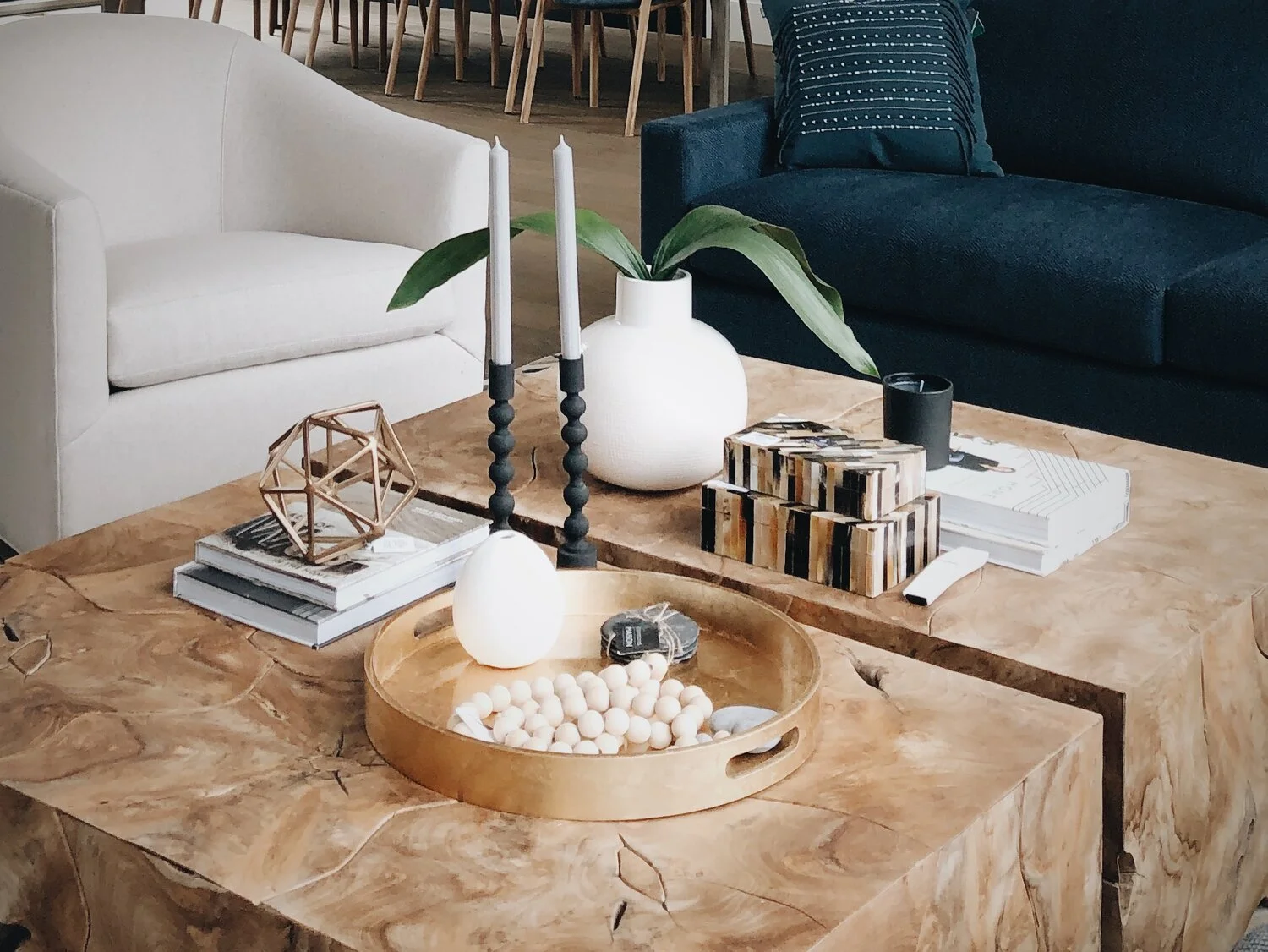Worn to Wonderful: Chair Reclamation
A few summers ago we got out to visit a few local vintage stores, and found a gem of a chair. It was battered and bruised, but we saw its potential, and decided to give it a new lease on life.
It’s all about the thrill of the find, and bringing new life to a piece of furniture. The refinishing process is a great way to take a piece from drab to fab, and add a “life well lived” flavour to your home.
WHAT YOU’LL NEED:
All purpose remover
Scraper
Sandpaper of a few different grits (80 - 400)
Wood filler
Wood glue
New hardware (optional)
Primer
Paint
Screwdrivers
1. RESEARCH & MATERIALS
Make sure to read into the restoration process. Different materialities will require a different approach, so it’s imperative you do your research ahead of time. When you have a firm handle on your process, head on over to your local hardware store to pick up the necessary materials.
2. DECANING
We had to remove the existing caning in our chair before we could get to work on the refinishing process. We were able to do this ourselves, however if you’re not able to successfully remove the caning without damaging the structural integrity of the chair, we recommend you take it to a professional. (Note: this would also be true for upholstered items.) We started by removing the chair’s spline, and were able to then lift out the caning weave from there.
3. STRIPPING
Your fab find will likely have an existing finish, which will need removing. Believe me when I say using an all-purpose remover will make your life a lot easier! Once the existing finish is off, you’re ready for sanding.
4. SANDING
Using a coarser sanding paper (80-120 grit), sand down your piece. Make sure to sand out any dents or scratches.
5. GLUE & FILLER
If your piece is splitting in areas, use a wood glue and clamp the affected area accordingly. Any knicks or gauges in the wood can be filled using a wood filler. Follow up using a finer sandpaper (180-400 grit). Re-sand your fab find, making sure to smooth out any spots where filler was used.
NOTE:
If painting, it's best not to use too fine of sand paper. Paint requires subtle texture for best results. Applying paint to a smoother surface can lead to peeling. We used 180 grit paper to finish off our chair. Using a 400 grit sandpaper to finish your fab find is best suited if you're planning on staining your piece.
6. PRIME & PAINT
You’ll first need to apply an even coat of primer to your item. Careful not to apply too much as to avoid runs or drips in the primer. Once dried, you’re ready to paint!
Again, apply an even coat of paint, being sure to avoid any drips. Depending on the colour you’re working with, you may need to apply multiple coats of paint. Should this be the case, using a finer grit sandpaper, quickly sand over your piece being careful as not to remove the paint finish. Continue this process until you’re happy with your results!
Note:
When using an interior paint, it’s not required that you apply a varnish to seal your piece. If you’re staining, however, varnish will be necessary.
7. CANING
Caning is a traditional process that not many are familiar with. We enlisted the help of Caning Canada to add in the final touches to our chair.
8. STYLE & ENJOY
You’re ready to set the stage! Style your new item with decor and enjoy your fab find!
Hello!
Welcome. We’re so happy you stopped by. Our goal is to be a leader in the interior design and lifestyle industry, known for our creativity, authenticity, professionalism and expertise, as a go to resource to learn, work with or simply be inspired. Thank you for spending time with us!















A step-by-step guide to refinishing furniture with Calgary Interior Design studio, Nyla Free Designs.